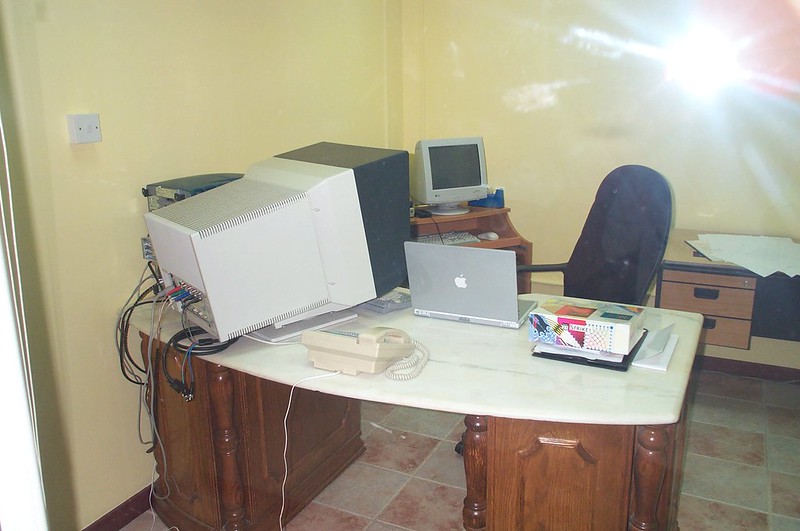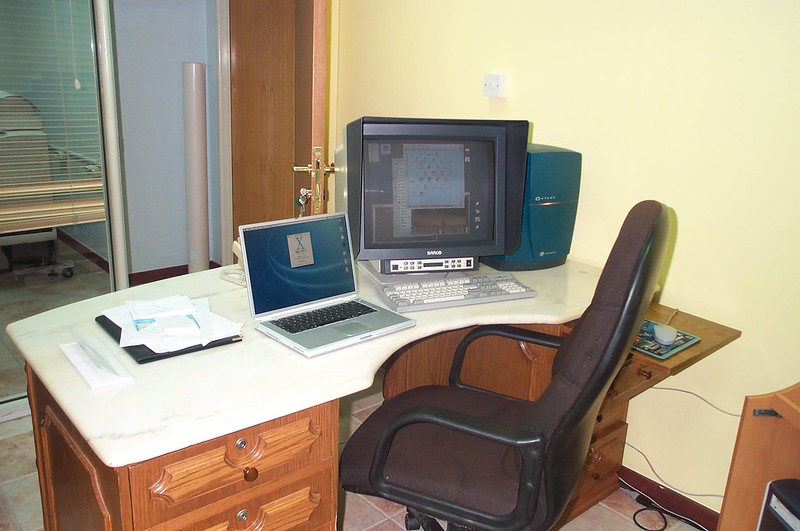I worked with Barco software and hardware at a few different companies. It was always client/server with the server being huge DEC VMS refrigerator sized multiprocessor giants and the clients being SGI workstations with special video cards and accelerator cards and huge beautiful Barco monitors. I'll dig up some photos if anyone wants to see. Sometimes the files were stored on yet another server often a huge AIX machine. We also used a NeXT cube with a huge gray scale monitor only to preview PostScript images, it had no other function in the shop.
When you started work you would log into the server and push X for the application you want to run. These were rock solid systems and did amazing work. The vector art system we used was developed for GIS data and had no problems dealing with the huge documents we were working on. Macs would crash trying to open them.
I really enjoyed working in these high end environments and got out just as windows was starting to appear there.
When you started work you would log into the server and push X for the application you want to run. These were rock solid systems and did amazing work. The vector art system we used was developed for GIS data and had no problems dealing with the huge documents we were working on. Macs would crash trying to open them.
I really enjoyed working in these high end environments and got out just as windows was starting to appear there.


